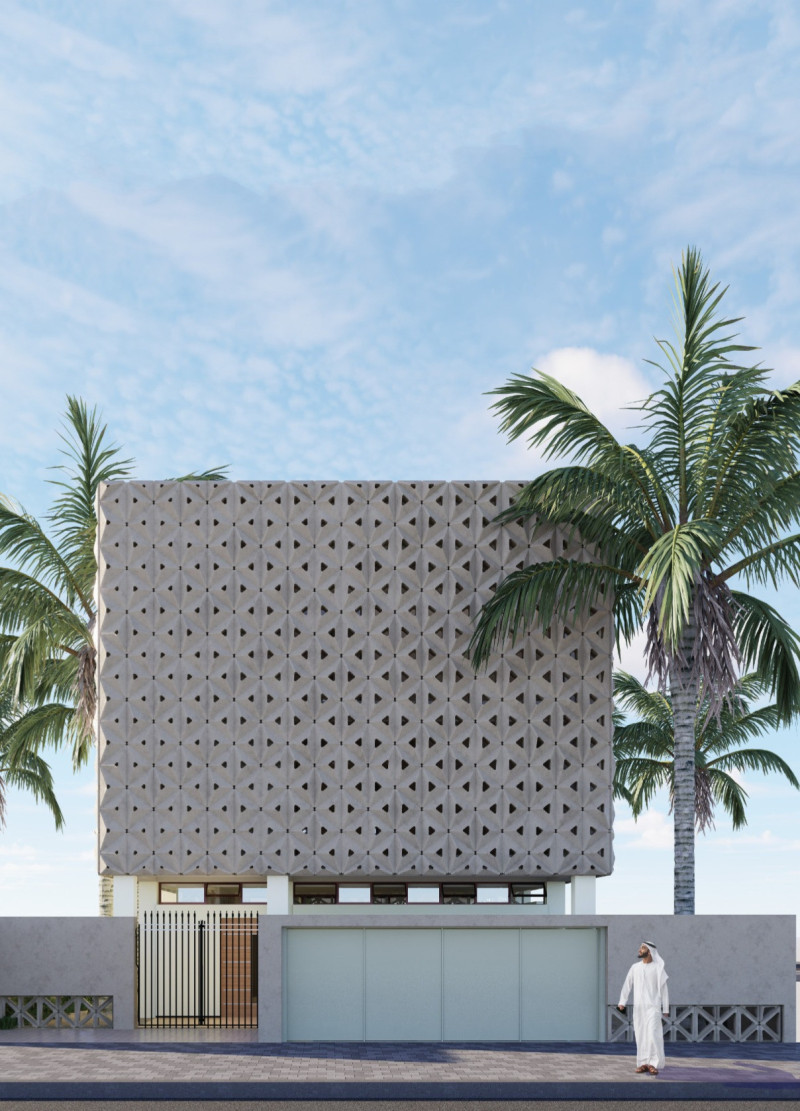5 key facts about this project
At first glance, the building's exterior presents a façade characterized by a blend of natural and man-made materials, which invites exploration and engagement. The use of materials such as locally sourced timber, concrete, and glass not only creates a visually pleasing contrast but also ensures sustainability and longevity. The timber elements, with their warm tones, enhance the building’s organic connection to nature, while the concrete provides structural integrity and durability. The expansive glass panels introduce an abundance of natural light, creating an inviting atmosphere that blurs the lines between indoor and outdoor environments.
The architectural design incorporates various functionalities, each carefully considered to cater to the needs of its users. For instance, dedicated spaces for public gatherings, workshops, and exhibitions allow the project to serve as a cultural hub for the community. This multifunctionality is critical, as it addresses the growing demand for versatile spaces that can adapt to diverse activities. The layout facilitates easy circulation, enabling visitors to seamlessly transition between areas while encouraging social interaction and collaboration among users.
Particular attention has been given to the relationship between the building and its site. The project's positioning takes advantage of the natural landscape, incorporating strategies that enhance views and promote passive solar gain. The landscaping surrounding the building complements the architectural design, offering green spaces that serve both aesthetic and ecological purposes. Native plant species have been utilized to minimize maintenance while supporting local biodiversity, showcasing a commitment to environmentally responsible design.
Unique design approaches have also been employed to enhance the building's functionality. For example, the roof has been designed to accommodate green technology, such as solar panels, demonstrating an investment in renewable energy sources. Additionally, rainwater harvesting systems have been integrated into the building’s design, further emphasizing sustainability by reducing reliance on municipal water supplies. These features contribute to the overall resilience of the architecture, allowing it to adapt to changing environmental conditions.
Another notable aspect of the project is its engagement with the local cultural and historical context. The design not only reflects contemporary architectural trends but also pays homage to the region’s heritage through the thoughtful integration of traditional motifs and local craftsmanship. This dialogue between past and present adds depth to the project while fostering a sense of identity and belonging within the community.
In summary, this architectural project stands out for its balanced approach to design, where functionality meets aesthetic sensibility. The combination of environmentally responsible materials, innovative technologies, and a deep respect for the surrounding landscape contributes to its effectiveness as a community-centric space. For readers looking to delve deeper into the architectural plans, architectural sections, and architectural designs, further exploration of this project’s presentation is encouraged. Engaging with the various architectural ideas presented will provide insights into the careful considerations that have shaped this remarkable contribution to the built environment.


 Lim Boon Hau ,
Lim Boon Hau , 























